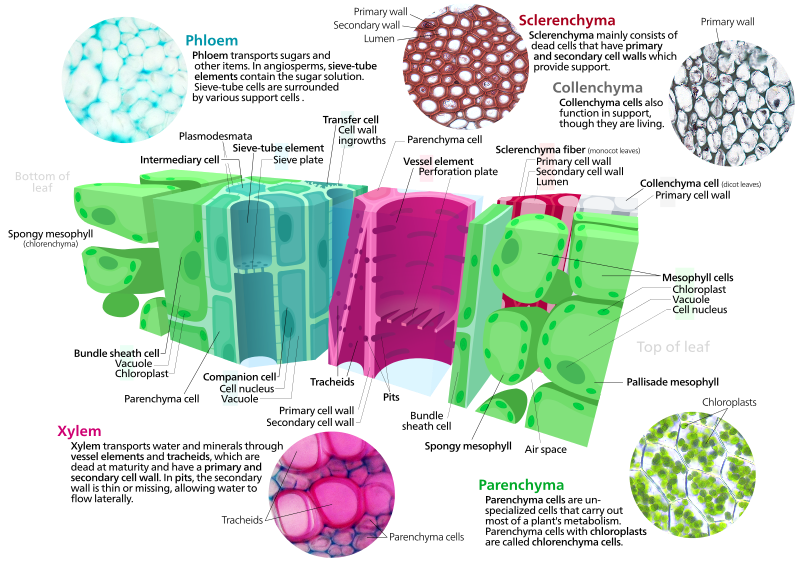PDF chapter test TRY NOW
Difference between meristematic tissue and permanent tissue:
Meristematic tissue | Permanent tissue |
The cells divide repeatedly. | The cells are formed from meristematic tissue and do not divide. |
Cells are undifferentiated. | Cells are fully differentiated. |
Intercellular spaces are absent. | Intercellular spaces are present. |
Vacuoles are absent. | Vacuoles are present. |
Metabolism happens at a high rate. | Metabolism happens at a low rate. |
Cell wall of its cells are thin. | Cell wall of its cells can be thick or thin. |
It has living cells | It has both living or non-living cells. |
Summary:
- A tissue is stated as a cluster of cells with a common origin, which is uniform in structure and works together to execute a specific function, e.g., blood, phloem, and muscles.
- Based on dividing capability, plant tissues can be divided into two types, i.e.meristematic tissue and permanent tissue.
- Meristematic tissues are classified based on their position in the plant body. i.e. apical meristem, intercalary meristem and lateral meristem.
- Apical meristems are present at growing tips of the stem and roots, branches, and developing young leaves of vascular plants. This meristem helps to increase the length of the stem and the roots.
- Intercalary meristem are present at the base of inter-nodes, between the places at which the leaves attach, i.e., at leaf bases. It provides elongation and growth of part of the plant.
- Lateral meristems are present at the lateral sides of stems and roots; they increase the girth of stem and root.
- Permanent tissues are made up of mature, living or dead cells which are divide from meristematic tissues.
- In Plants, meristematic tissue loses its ability to divide after they take up specific role. This process of taking up a permanent shape, size, and a function of a meristematic tissue into a permanent tissue is called differentiation.
- Parenchyma tissue form the fundamental packing tissue. These tissues are present in the cortex, pith of stem, roots and also mesophyll of leaves.
- Collenchyma cells are living cells, which are elongated and unevenly thickened at the corners because of pectin's deposition. Intercellular spaces between cells in this tissue is tiny.
- Sclerenchyma cells of this tissue are dead cells and act as a skeleton in plants. Cells are long and narrow in appearance with no nucleus and no cytoplasm. It is the most hardened plant tissue. Cell walls of this tissue are uniformly thickened due to lignin, which often provides no intercellular spaces between cells. E.g., Jute and coir fibres are rich in lignin.
- Complex permanent tissues are consist of different types of cells having a common origin. Even though the cells' appearance are different, all the cells coordinate to perform a common function. Xylem and phloem are the most complex tissues in plants. They are part of the vascular bundles.
- Xylem is a complex permanent, vascular tissue meant for mechanical support and conduction of sap (water + minerals) in only upward direction (unidirectional).
- Phloem is the food conducting tissues of the vascular plant. The materials (food), i.e. (towards the root and stem) can move in both directions(Here, the movement of food is bidirectional (i.e., upward and downward) because phloem transports food and water from leaves to all the parts of the plant.

Plant cell types
Reference:
https://commons.wikimedia.org/wiki/File:Plant_cell_types.svg
